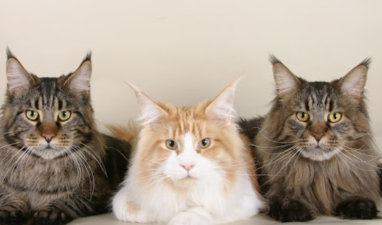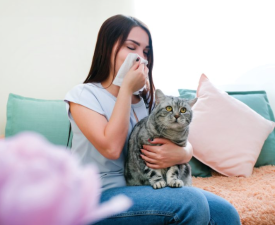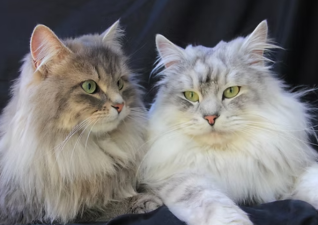The difference between long-haired cats and short-haired cats
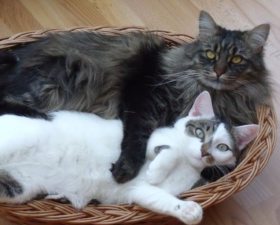
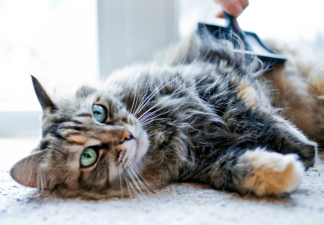
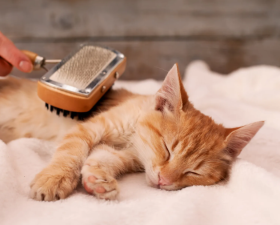

The difference between long-haired cats and short-haired cats
Long-haired cats: hair length is more than 5 cm. The hair length of different breeds of long-haired cats varies greatly. Some have fine hair, some are short and rough, or long and fluffy.
Short-haired cats: The hair length is shorter, usually not more than 5 cm.

The difference in care between short-haired cats and long-haired cats is mainly reflected in hair care, cleaning frequency, health risks, etc. The following are specific comparisons and suggestions:
- Hair combing
Short-haired cats
Frequency: 1-2 times a week is enough.
Tools: It is suitable to use a rubber comb, a fine-tooth comb or a special brush for short hair (such as a silicone glove brush).
Features: Short hair is not easy to tangle, but it is still necessary to strengthen combing during the molting period to reduce hair loss.
Long-haired cats
Frequency: Combing is required every day or every other day to avoid hair tangling.
Tools: Wide-tooth comb, row comb or pin comb, and knots need to be handled with a knotting knife (gentle movements).
Focus: Pay special attention to the areas prone to tangles, such as the armpits, abdomen, and behind the ears.

- Bathing and cleaning
Short-haired cats
Bathing: Once every 2-3 months (or less), the oil secretion of short-haired cats is easier to distribute naturally.
Cleaning: Occasionally wipe with a wet wipe.
Long-haired cats
Bathing: It is recommended to use a long-haired shower gel once every 1-2 months, and blow dry thoroughly after washing to prevent skin diseases.
Special needs: The hair around the anus and the soles of the feet needs to be trimmed regularly to avoid sticking excrement or dirt.
- Hair tangling and trimming
Short-haired cats:
Rarely tangled, usually no trimming is required.
Long-haired cats:
Check the hairballs regularly, and severe tangles need to be trimmed (avoid pulling the skin).
In summer, you can consider trimming with a "lion cut" (keeping the hair on the head and tail), but you need to weigh the temperature regulation function.
- Hair shedding problem
Short-haired cats: The amount of hair shedding may be more (the hair is short and dense), and regular vacuuming is required.
Long-haired cats: Hair loss is more obvious (long hair is easy to float), but the amount of floating hair can be reduced by daily combing.
- Health risks
Hairball disease:
Long-haired cats are at higher risk and need to be fed hair remover/cat grass every week.
Short-haired cats can reduce the frequency appropriately (such as once every 2 weeks).
Skin diseases: Long-haired cats have thick and dense hair, which is easy to hide parasites or cause dermatitis due to moisture. They need to be dewormed regularly and kept dry.

- Other care
Nail trimming: Long-haired and short-haired cats need to be trimmed every 2-3 weeks.
Ear cleaning: Long-haired cats may have fluff in their ears (such as ragdoll cats), which need to be checked and cleaned regularly.
Diet and nutrition: Long-haired cats can supplement Omega-3 (fish oil) to promote hair health.
Short-haired cats: Care is time-saving, with the focus on combing during the molting period and daily environmental cleaning.
Long-haired cats: More time needs to be spent on combing to prevent tangles and hairball disease, and maintain hygiene details.
Supplementary food for maintenance
We often say that food supplements are better than medicine supplements. Although there is no drug that can directly or indirectly inhibit cat hair loss, scientific and appropriate food supplements can also help owners improve the quality of cat hair maintenance~
In terms of daily diet, the following 4 kinds of food are recommended:

Egg yolk: Egg yolk is a very good natural lecithin, which nourishes the hair of pets. It is recommended to feed 1-2 per week.
Vitamin B: Although drugs cannot inhibit hair loss, vitamin B can increase skin resistance, reduce skin problems, and thus improve hair growth. It is recommended to feed one every three days.
Fish oil: Needless to say, the nutrition of fish oil has a nourishing effect on the physiology of pets. It is recommended to feed 2 per week, but please note that fish oil needs to be fed to cats over four months old.
Cat grass: Hairball disease can make cats lose their appetite at the mildest, and threaten their life safety at the worst, requiring surgery! Therefore, planting some cat grass at home can effectively help their gastrointestinal motility. It is recommended to wait until the cat is 6 months old before starting to plant it for them to eat.

